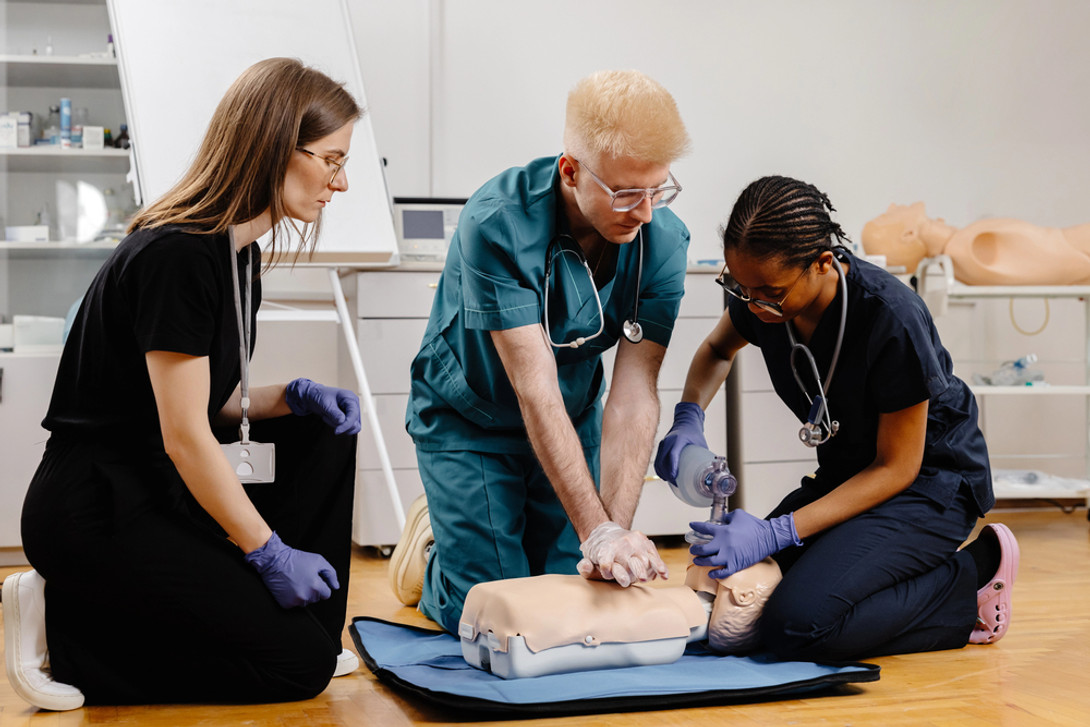Starting your first residency rotation is a major milestone. You’ve navigated the rigors of medical school, survived Step exams, and celebrated Match Day. Now, as you step into clinical practice, you need to be ready, both mentally and practically. A well-packed bag can make your transition into residency smoother and more successful. Whether you’re moving across the country or just to a different hospital floor, knowing what to bring can ease your nerves and help you hit the ground running.
The Essentials: What Every Resident Needs
Stethoscopes
Your stethoscope will be your constant companion; don’t skimp here. Two standout options include:
- 3M Littmann Classic III: An ideal entry-level choice for residents. With a dual-head chestpiece (adult and pediatric sides) and tunable diaphragms, it’s built for versatility and ease of learning. It’s lightweight, reliable, and well-suited for general medicine, pediatrics, or emergency care rotations.
- 3M Littmann Cardiology IV: This is the next step up, crafted for critical care and those entering high-acuity specialties like cardiology or ICU. Its superior acoustic clarity helps detect faint heart murmurs or lung crackles. With a single-piece diaphragm and robust tubing, it’s built for the long haul.
Want to personalize your gear? Add laser engraving for security and style with your name and credentials. It adds a personal touch and helps prevent mix-ups.
Diagnostic Tools You’ll Actually Use
While your hospital may provide some equipment, having your own portable diagnostic tools can save time and increase efficiency.
- Pocket Diagnostic Set: A kit with an otoscope, ophthalmoscope, and penlight is invaluable, especially during primary care or pediatric rotations. The ADC 5110N Diagnostic Set is compact and dependable.
- Penlight: For quick pupil checks and throat exams, keep a Welch Allyn Penlight clipped to your coat.
The Clinical Essentials
Scrubs (and More Scrubs): You'll go through more than you think. Choose moisture-wicking, wrinkle-resistant sets and include at least one backup in your locker or bag.
Comfortable Shoes: This isn’t the time for style over substance. You’ll be on your feet for long hours. Opt for supportive, non-slip footwear like Danskos or HOKA sneakers; your feet will thank you after a 12-hour shift. Your knees and back will thank you.
White Coat & ID Badge: Some hospitals provide these, but bring your own if uncertain (a couple if possible). Hospitals can be messy; backup options are a must. Check with your program to confirm dress code specifics. Attach a clip with a penlight, scissors, and hand sanitizer.
Pocket Notebook & Cheat Sheets: For rapid note-taking and keeping track of patient data, jotting down patient pearls, medication dosages, rounding tips or differential diagnosis trees. Many residents also swear by reference guides like “The Washington Manual” or “Pocket Medicine.”
Clipboard with Storage: A foldable clipboard with space for extra sheets, note cards, and order sheets is a smart choice for rounds.
Medical-grade Masks and Shields: While not always required, having your own supply ensures you're prepared for any rotation-specific requirements
Medical Reference Apps
Install apps like:
- UpToDate or Epocrates: for fast clinical decision support.
- MDCalc: for medical calculators and risk scores.
- Eko App (if using a digital stethoscope): for visualization and sound amplification.
Residency-Ready Extras
- Water bottle and snacks: Hydration and quick nutrition will keep you going.
- Sleep mask and earplugs: On-call naps can happen anywhere, anytime.
- Backpack or rolling bag: Find one with compartments for stethoscopes, snacks, and laptops.
Tech to Keep You Efficient
In today’s digital-first clinical settings, tech is as essential as your scrubs.
Smartwatch or fitness tracker: Track your steps, monitor heart rate, or receive shift reminders on your wrist without pulling out your phone.
Tablet or lightweight laptop: Perfect for note-taking, reviewing labs, or completing evaluations between patient visits. Make sure it’s HIPAA-compliant if using for clinical work.
Portable battery pack: Keep your devices charged on the go. A compact charger can keep your devices (and sanity) alive. Residency can mean 12+ hours away from outlets.
Noise-Canceling Headphones: Block out distractions when you’re on call and trying to nap.
Interested in leveling up your auscultation game?
- 3M Littmann CORE Digital Stethoscope: With 40x sound amplification and active noise cancellation, this stethoscope is ideal for high-noise areas like the ER. Bonus? It syncs with the Eko app for sound wave visualization and digital recording, great for telehealth or consults.
Residency Packing Checklist
Here's a quick recap you can save or screenshot:
✅ Stethoscope (Classic III or Cardiology IV)
✅ White coat
✅ Scrubs (at least 3 sets)
✅ Comfortable, closed-toe shoes
✅ Pocket notebook + cheat sheets
✅ Diagnostic kit
✅ Clipboard with storage
✅ Water bottle + healthy snacks
✅ Tablet/laptop
✅ Battery bank + chargers
✅ ID badge + accessories
✅ Engraved stethoscope for easy ID
Your first residency rotation is a whirlwind of emotions and learning. Residency is where everything comes together, your education, your instincts, and your gear. The right tools can boost your confidence and performance in those critical early days. Whether you’re stocking up for rotations or preparing a thoughtful gift for a new resident, each of these items serves a purpose in streamlining care and supporting wellness.
For a full list of residency-ready tools and gifts, explore Stethoscope.com to browse Littmann models, accessories, and custom engravings.

